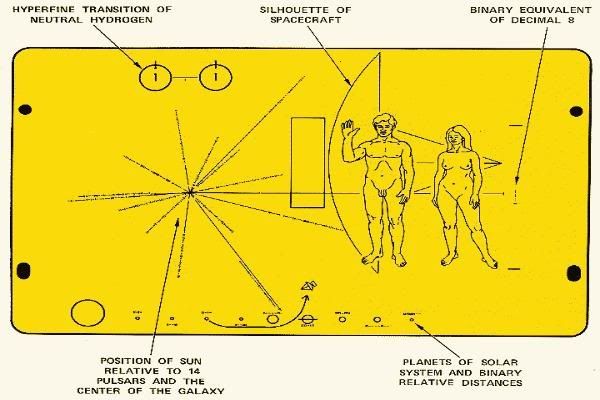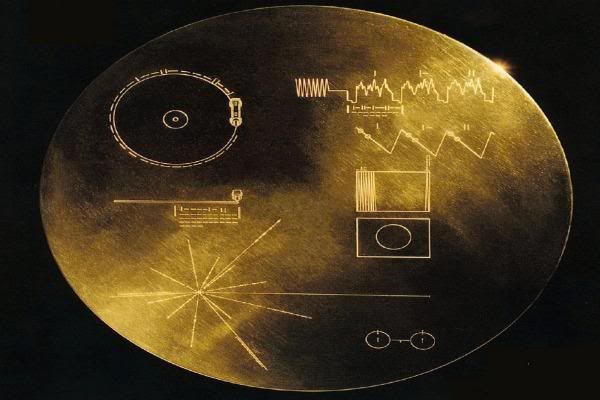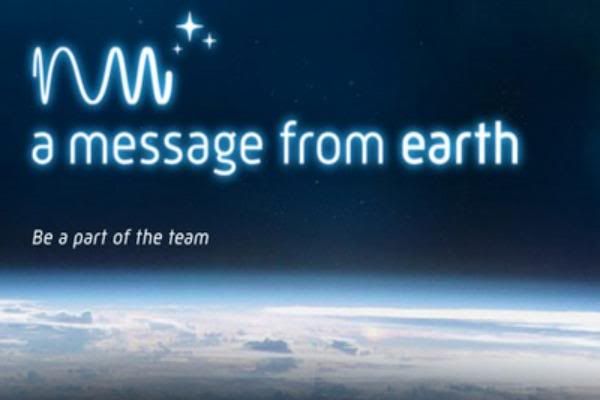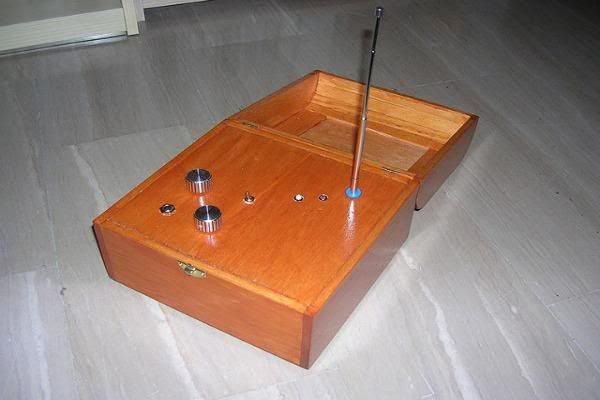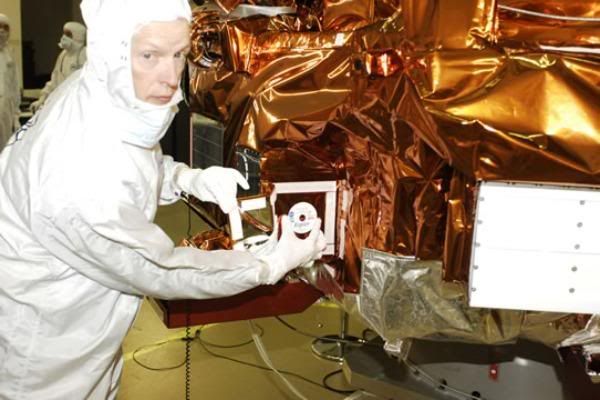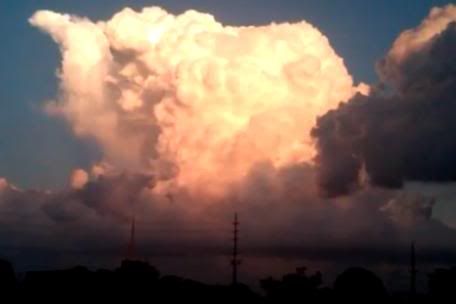The Smallest

Credit: NASA
This artist's concept of Kepler-10b shows the smallest known exoplanet, announced in January 2011.
The Former Champ

Credit: ESO/L. Calcada
Gliese 581 e used to hold the title of smallest alien planet. However, it was dethroned in January 2011, with the announcement of Kepler-10b.
The Biggest
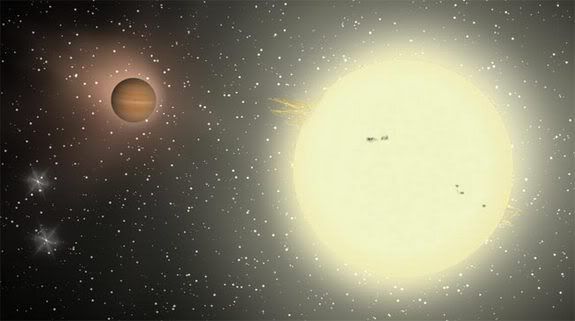
Credit: Jeffrey Hall, Lowell Observatory
The largest exoplanet ever discovered is also one of the strangest and theoretically should not even exist, scientists say. Dubbed TrES-4, the planet is about 1.7 times the size of Jupiter and belongs to a small subclass of so-called puffy planets that have extremely low densities. The planet is located about 1,400 light years away from Earth and zips around its parent star in only three and a half days
Closest Alien World to Us
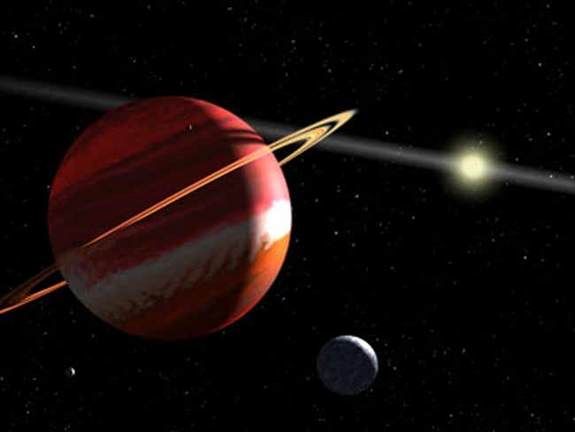
Credit: NASA, ESA, G.F. Benedict (University of Texas, Austin)
Epsilon Eridani b orbits an orange Sun-like star only 10.5 light years away from Earth. It is so close to us telescopes might soon be able to photograph it. It orbits too far away from its star to support liquid water or life as we know it, but scientists predict there are other stars in the system that might be good candidates for alien life.
Volcanic Nightmare
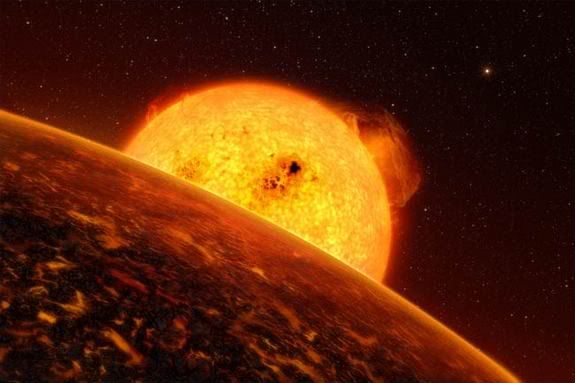
Credit: ESO/L. Calcada
This planet, CoRoT-7b, was the first confirmed rocky world outside our solar system, but it doesn't look like a particularly pleasant place to live. It is tidally locked to its parent star, sees hellish 4,000 degrees Fahrenheit (2,200 degrees Celsius). It may also rain rocks and be the core of a vaporized gas giant.
Multiple Sunsets Like Tatooine
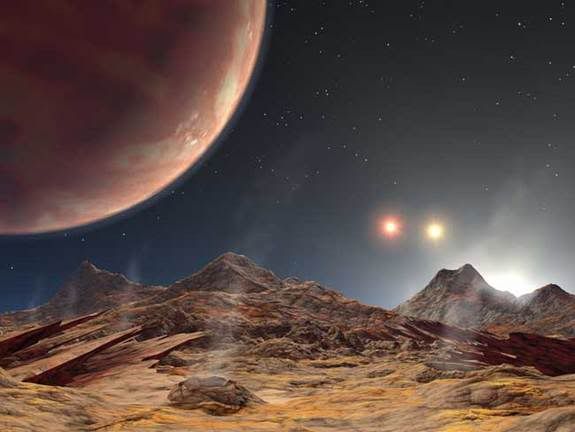
Credit: NASA/JPL's Planetquest/Caltech
Luke Skywalker’s home planet of Tatooine in Star Wars had two suns, but that’s paltry compared to a Jupiter-like planet 149 light-years from Earth. This planet has three suns, with the main star similar in mass to our own sun. The triple-star system is known as HD 188753. Like Tatooine, the planet there is likely pretty hot – it orbits very close to the main star, completing one orbit every 3.5 days.
Coldest and Farthest From Us
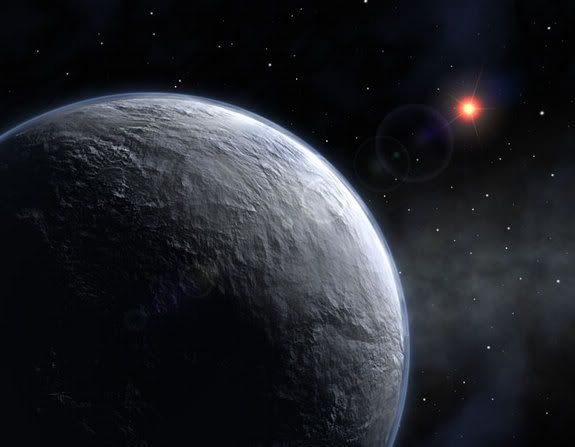
Credit: ESO
With a surface temperature of -364 degrees Fahrenheit (-220 degrees Celsius), the extrasolar planet known as OGLE-2005-BLG-390L b is likely the coldest alien world. It is about 5.5 times as massive as Earth and thought to be rocky. It orbits a red dwarf star about 28,000 light-years away, making it the most distant exoplanet currently known.
Hottest World
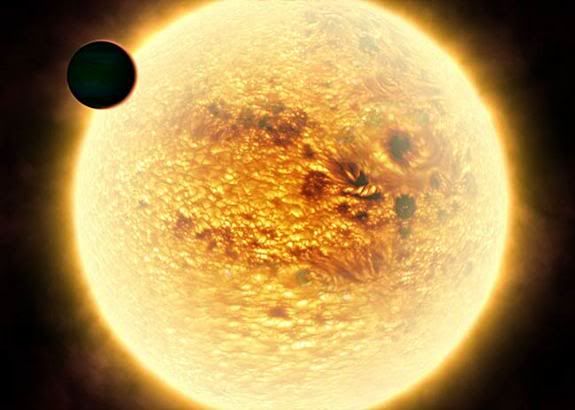
Credit: ESA/NASA/Frederic Pont, Geneva University Observatory
A planet called WASP-12b is the hottest planet ever discovered (about 4,000 degrees Fahrenheit, or 2,200 degrees Celsius), and orbits its star closer than any other known world. It orbits its star one every Earth day at a distance of about 2 million miles (3.4 million km). WASP-12b is a gaseous planet, about 1.5 times the mass of Jupiter, and almost twice the size. It is 870 light-years from Earth
Super-Earth
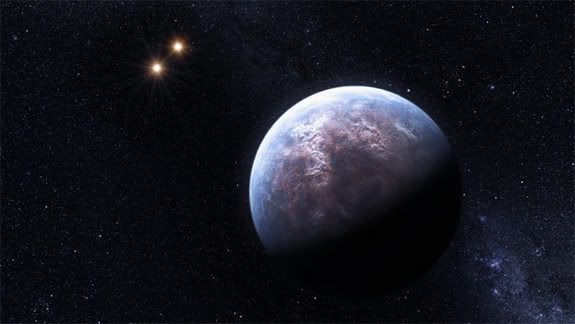
Credit: ESO
Astronomers are finding many worlds now in a category of worlds called Super-Earths, which are between 2 and 10 times the mass of our own Earth. Some scientists think such worlds could be more susceptible to forming the conditions for life because their cores are hot and would be conducive to geological upheaval through volcanism and plate tectonics
Oldest Alien Planet
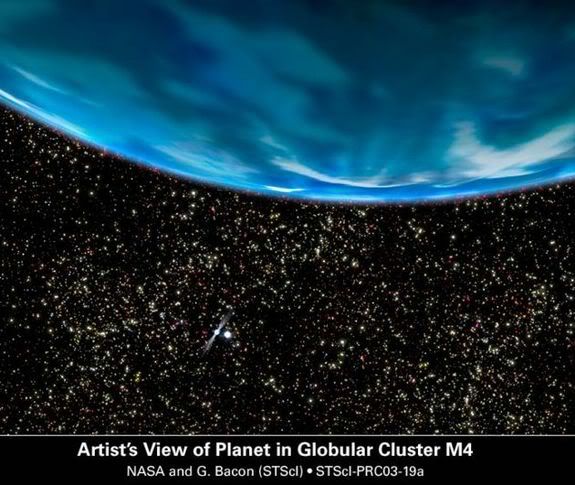
Credit: NASA and H. Richer (U. British Columbia)
The oldest known planet is a primeval world 12.7 billion years old that formed more than 8 billion years before Earth and only 2 billion years after the Big Bang. The discovery suggested planets are very common in the universe and raised the prospect that life began far sooner than most scientists ever imagined.
The Youngest Known Exoplanet
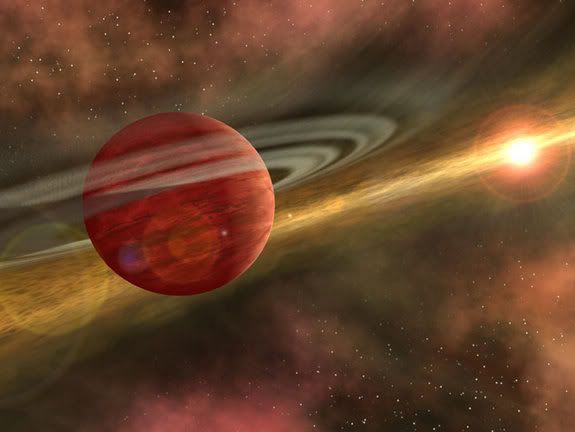
Credit: NASA
The youngest exoplanet yet discovered is less than 1 million years old and orbits Coku Tau 4, a star 420 light-years away. Astronomers inferred the planet’s presence from an enormous hole in the dusty disk that girdles the star. The hole is 10 times the size of Earth’s orbit around the Sun and probably caused by the planet clearing a space in the dust as it orbits the star.
The Puffiest
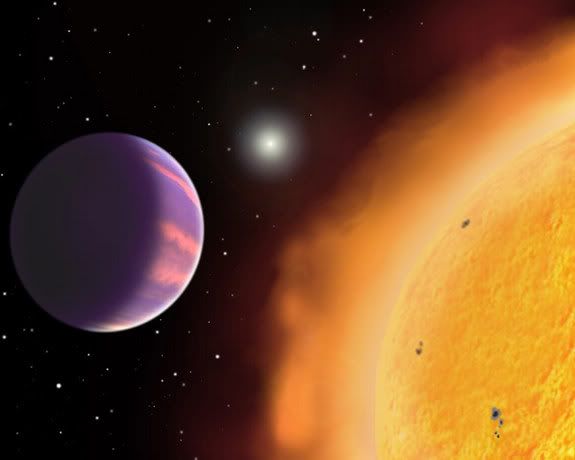
Credit: David A. Aguilar/Harvard-Smithsonian Center for Astrophysics
A planet lighter than a ball of cork is one of the puffiest alien planets known to date. Called HAT-P-1, the planet is about half as massive as Jupiter but about 1.76 times wider-or 24 percent larger than predicted by theory. It could float in water, if there was a tub large enough to hold it.
Super Neptune
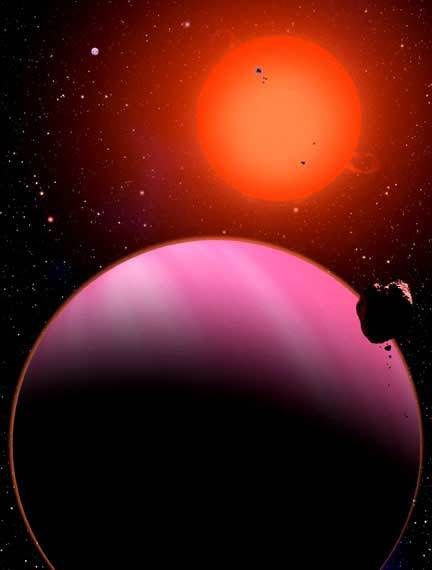
Credit: David A. Aguilar, CFA
While Neptune has a diameter 3.8 times that of Earth and a mass 17 times Earth's, the new world (named HAT-P-11b) is 4.7 times the size of Earth and has 25 Earth masses. The newfound world orbits very close to its star, revolving once every 4.88 days. As a result, it is baked to a temperature of around 1100 degrees F.
The star itself is about three-fourths the size of our Sun and somewhat cooler.
Tilted World
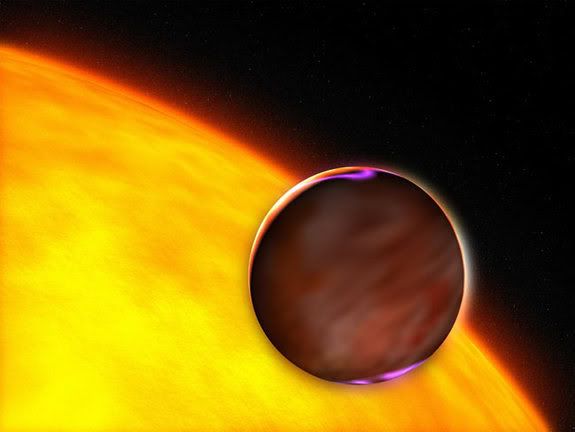
Credit: NASA. ESA, amd G. Bacon (STScI)
Most planets orbit in a plane that corresponds to their parent star's equator. But XO-3b orbits with a crazy tilt of 37 degrees from its star's equator. The only other known example of such an oddly angled orbit was Pluto, until its demotion
to dwarf planet status. There is, however, a planet known to orbit backwards around its parent star.
Fastest Planet
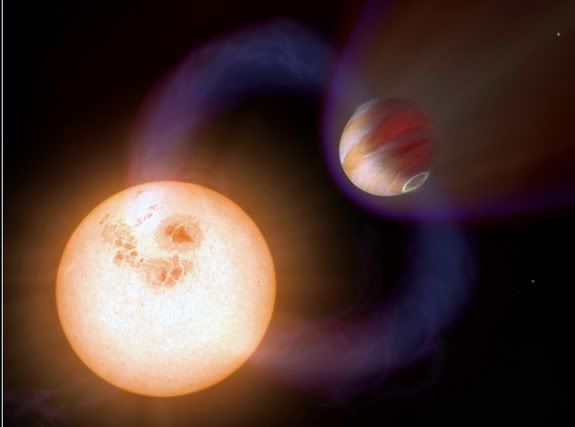
Credit: NASA, ESA, A. Schaller (for STScI)
SWEEPS-10 orbits its parent star from a distance of only 740,000 miles, so close that one year on the planet happens every 10 hours. The exoplanet belongs to a new class of zippy exoplanets called ultra-short-period planets (USPPs), which have orbits of less than a day.
Waterworld
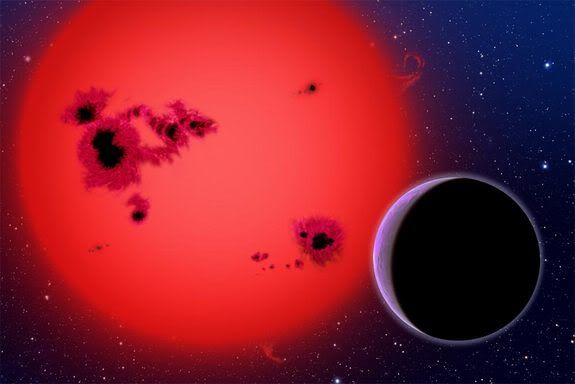
Credit: David A. Aguilar, CFA
The extrasolar planet GJ 1214b is a rocky planet rich in water that sits about 40 light-years away. It orbits a red dwarf star. It is the only known "Super-Earth" exoplanet — worlds that have masses between Earth and Neptune — with a confirmed atmosphere. The planet is about three times the size of Earth and about 6.5 times as massive. Researchers think it is likely a water world with a solid center.
Atmosphere Detected
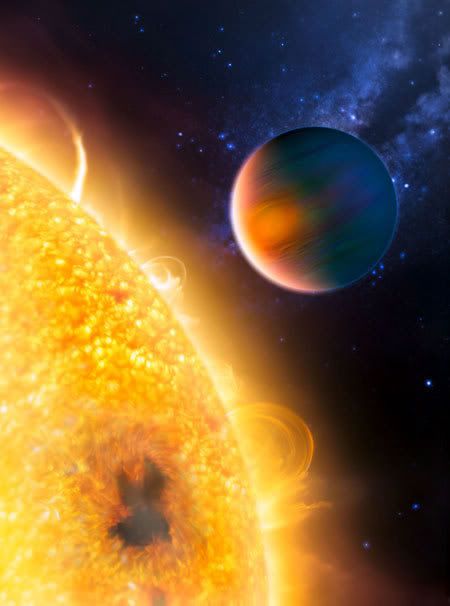
Credit: ESA, NASA and G. Tinetti
Astronomers have been able to detect the atmospheres around several exoplanets, including HD 189733b – one of the first alien words to have its atmosphere sniffed to determine its composition. Glowing methane, which can be produced naturally or be a biological byproduct, has been detected on the planet.
Endangered World
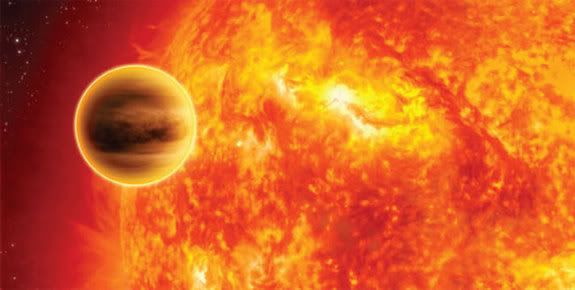
Credit: CARREAU/ESA/Nature
When astronomers observed WASP-18b, they may have seen it in the cosmic moment before its death. This planet, possibly an ill-fated world, whips around its star in less than one Earth day. Scientists think that this speed coupled with the planet's heft yields strong gravitational tugs that can alter the planets orbit. If the planet orbits faster than its star spins, it should gradually be moving inward towards its sun, and its doom.
Most Habitable
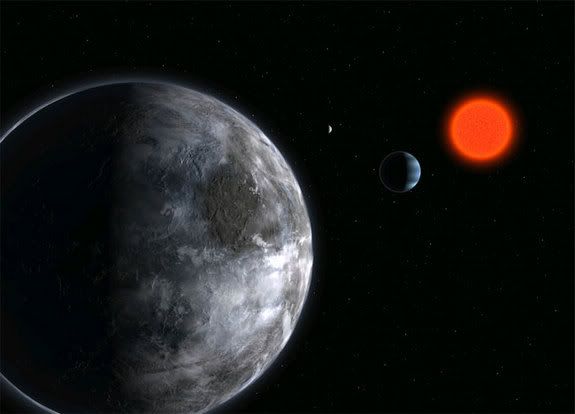
Credit: ESO
One of the several planets within the Gliese 581 star system, called Gliese 581 d, may be one of the most potentially habitable alien worlds known. It is about 8 times the mass of Earth, and located in an orbit just right for liquid water to exist on the surface. Water is a key ingredient for life as we know it. Gliese 581 is a red dwarf star 20.5 light-years from Earth
Densest Planet
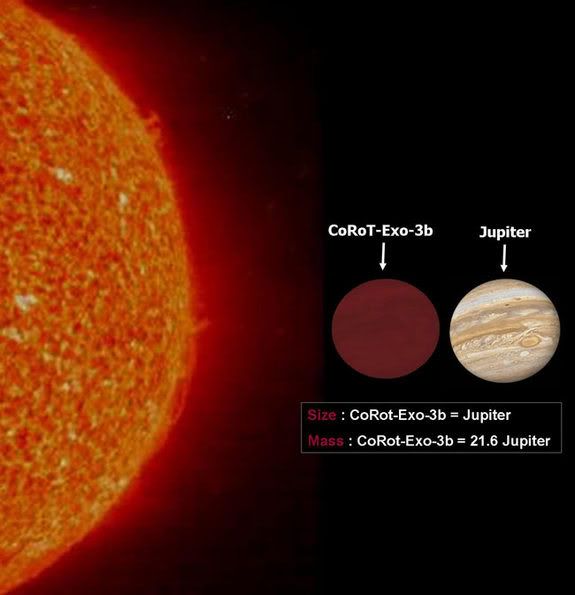
Credit: ESO/OAMP
One of the densest exoplanet to date is a world known as COROT-exo-3b. It is about the size of Jupiter, but 20 times that planet’s mass, making it about twice as dense as lead. Scientists have not ruled out that the COROT-exo-3b may be a brown dwarf, or failed star.

